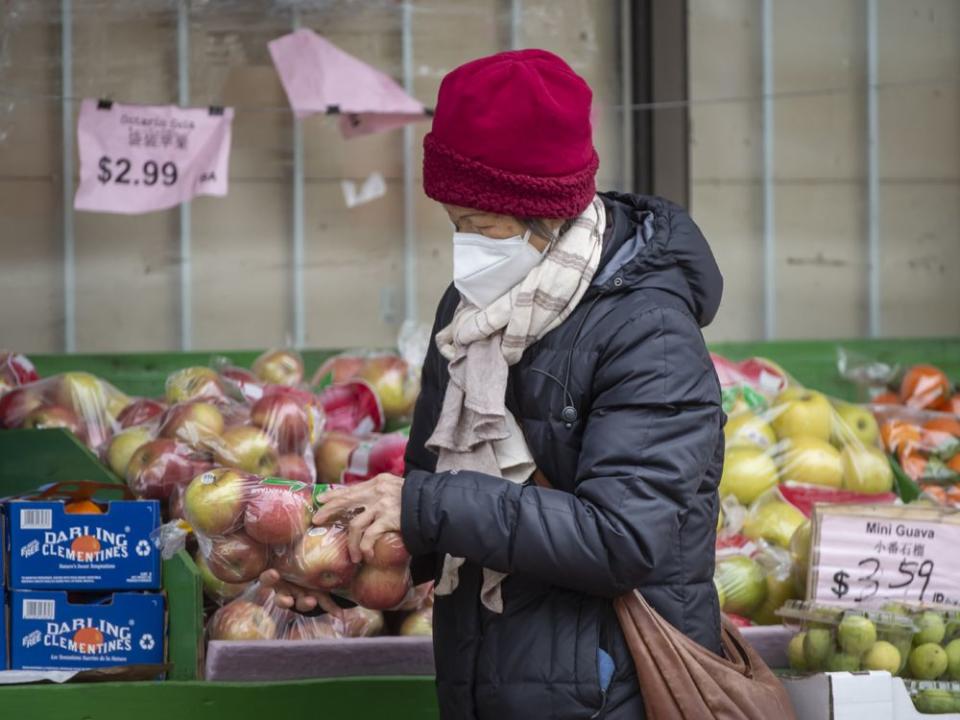Jack Mintz: Why Canada’s inflation rate is so high

Canadians will find no solace in Statistics Canada’s Wednesday announcement of the September inflation numbers. Consumer prices rose 6.9 per cent in September from the previous year. Sure, that’s a notch below last month’s 7.0 per cent, but prices are still rising quickly, especially food at 10.3 per cent and shelter at 6.8 per cent. Together the two make up 45 per cent of the average household’s consumption.
As a result, expect the Bank of Canada to continue raising interest rates into next year. The excess demand for labour — almost one million jobs are unfilled — means inflation will linger. Even though firms will reduce job availability as demand for their output shrinks, many will still be looking for workers. Continuing labour shortages enable workers to bargain harder for higher wages to make up for the loss in the purchasing power of their money. So, expect GDP growth to stall while unemployment hardly ticks up. Sharply higher interest rates could eventually lead to a full-blown recession.
Politicians will be quick to blame inflation on external factors: Putin’s war, Saudi-led oil restrictions or international food shortages. But here’s a puzzle. Why does Canada have an inflation rate almost two and half times those in China, Japan and Taiwan, all of which were 2.8 per cent year-on-year in their latest month. Even Hong Kong, Saudi Arabia and Switzerland have inflation rates less than half ours. All these countries have been affected by international trends too but their inflation rates are dramatically lower than ours.
The answer may not be that complicated. Using a little noticed paper published by the U.S. Federal Reserve last July, I find that countries with large spending binges in 2020 tended to have had much higher inflation rates in 2022. The relationship is not perfect across the 15 countries the paper examined but it is striking that the combination of spending more than forecast in 2020 and accommodative monetary policy in that year seems to have worked considerable mischief. It may have avoided an economic hemorrhage during the pandemic but it led to cost-push inflation in 2022.

As shown in the table, the United States had the largest spending binge in 2020 — 18.1 per cent — and also the largest broad monetary growth rate — 17.2 per cent. And now it has the highest inflation rate, apart from the United Kingdom. Canada was second to the U.S. with a 17 per cent deviation from projected spending and 13.8 per cent growth in money supply. At the other end of the spectrum, China did not bump up its spending in 2020 and although its money supply growth was 10 per cent its inflation rate has been modest in 2022. The odd country out is Japan, which had a hefty 15.2 per cent spending binge but less accommodative monetary policy resulting in relatively low inflation today.
Do international trends play no role in inflation? Not at all. In fact, the Federal Reserve study finds that a country can be directly affected by fiscal expansion in other countries. It estimates that 1.7 percentage points of our inflation has come from U.S. foreign fiscal expansion. In other words, the Biden administration’s reckless spending is pushing up Canadian interest rates even more.
Excessive spending at home in 2020 has led to two “taxes” on Canadians. The first has already been realized with wage increases lagging inflation rates, leading to a fall in the purchasing power of people’s incomes. It’s as if the government had raised the GST/HST on everybody. The second is sharply higher interest rates, which are reducing stock and bond valuations.
Another loss is rarely discussed: last year’s inadequate indexation of government transfers and income tax brackets. Indexation used monthly data from October 2020 to September 2021 and was only 2.4 per cent, just half the actual 2021 inflation rate (year-over-year as of December 2021). There will be a catch-up in 2023 when the new indexation factor should be 9.2 per cent, which will likely be more than 2022’s year-over-year rate. But not all income tax bases are fully indexed, notably capital income and corporate profits. Nor are some transfers: the Child Tax Benefit, for instance, is not indexed until next July 1st.
Inflation hurts. So do higher interest rates. And they aren’t solely due to factors beyond our control. Our own excessive spending is mostly responsible.

 Yahoo Finance
Yahoo Finance 